F&P my820 System for invasive ventilation
A tracheostomy tube bypasses the body's natural ability to humidify and clean its airway and inhibits a patient's protection reflexes, such as coughing, gagging and sneezing.1Failure to heat and humidify inspired gases for patients with bypassed airways can increase the risk of complications, which include drying of the airway, airway obstruction, bronchoconstriction and artificial airway tube occlusion.2 This drying can also prevent the airway’s mucus layer from trapping potentially dangerous particles and pathogens before they reach the lungs. Therefore, humidification and as-needed suctioning have a vital role in managing secretions for mechanically ventilated patients.3
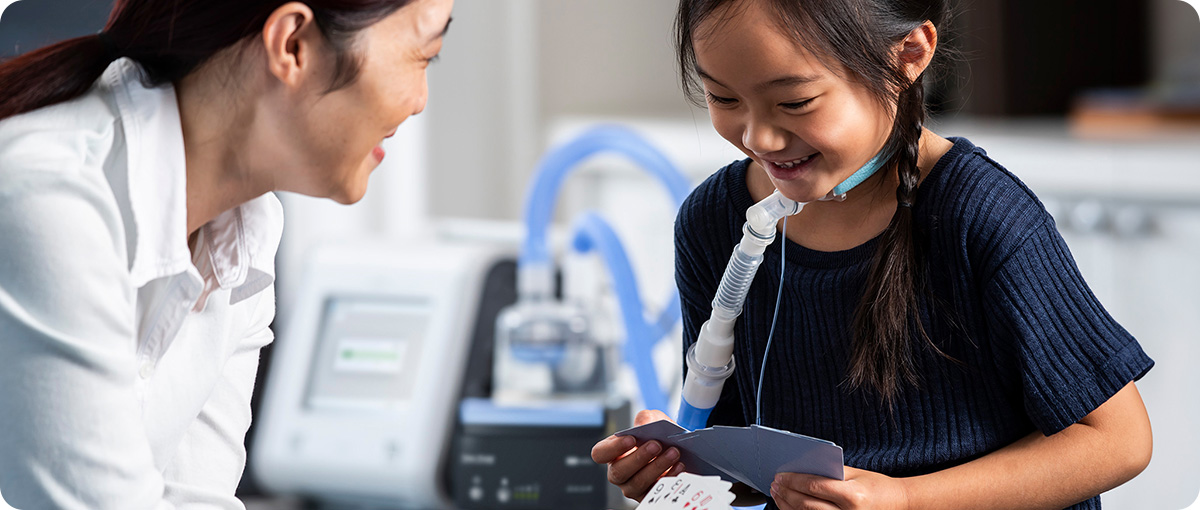
Single-limb tracheostomy setup (passive port)
A. Humidification Chamber B. Breathing Tube C. Humidifier Base D. Ventilator or other flow source
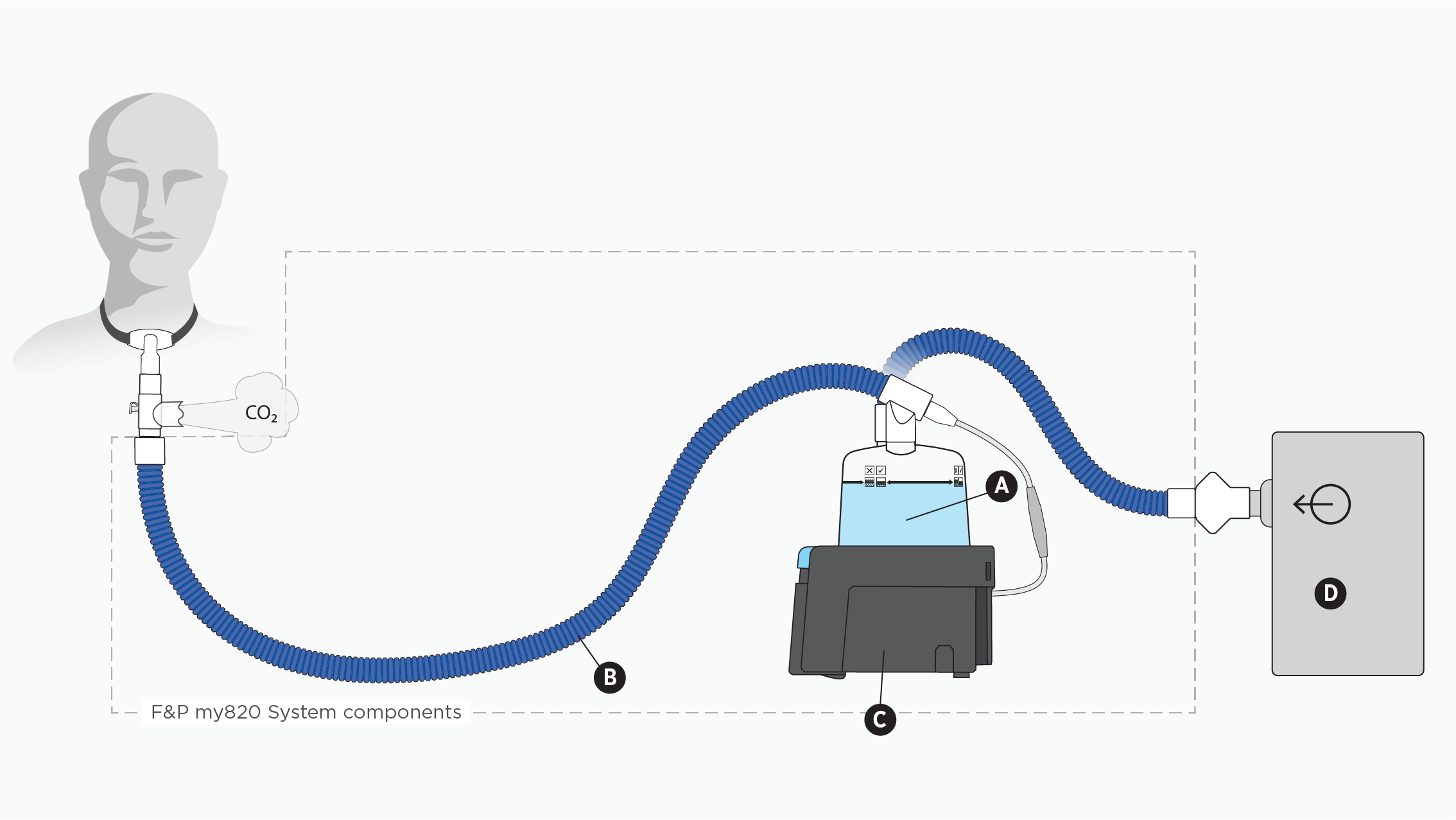
Single-limb tracheostomy setup (active exhalation valve)
A. Humidification Chamber B. Breathing Tube C. Humidifier Base D. Ventilator or other flow source
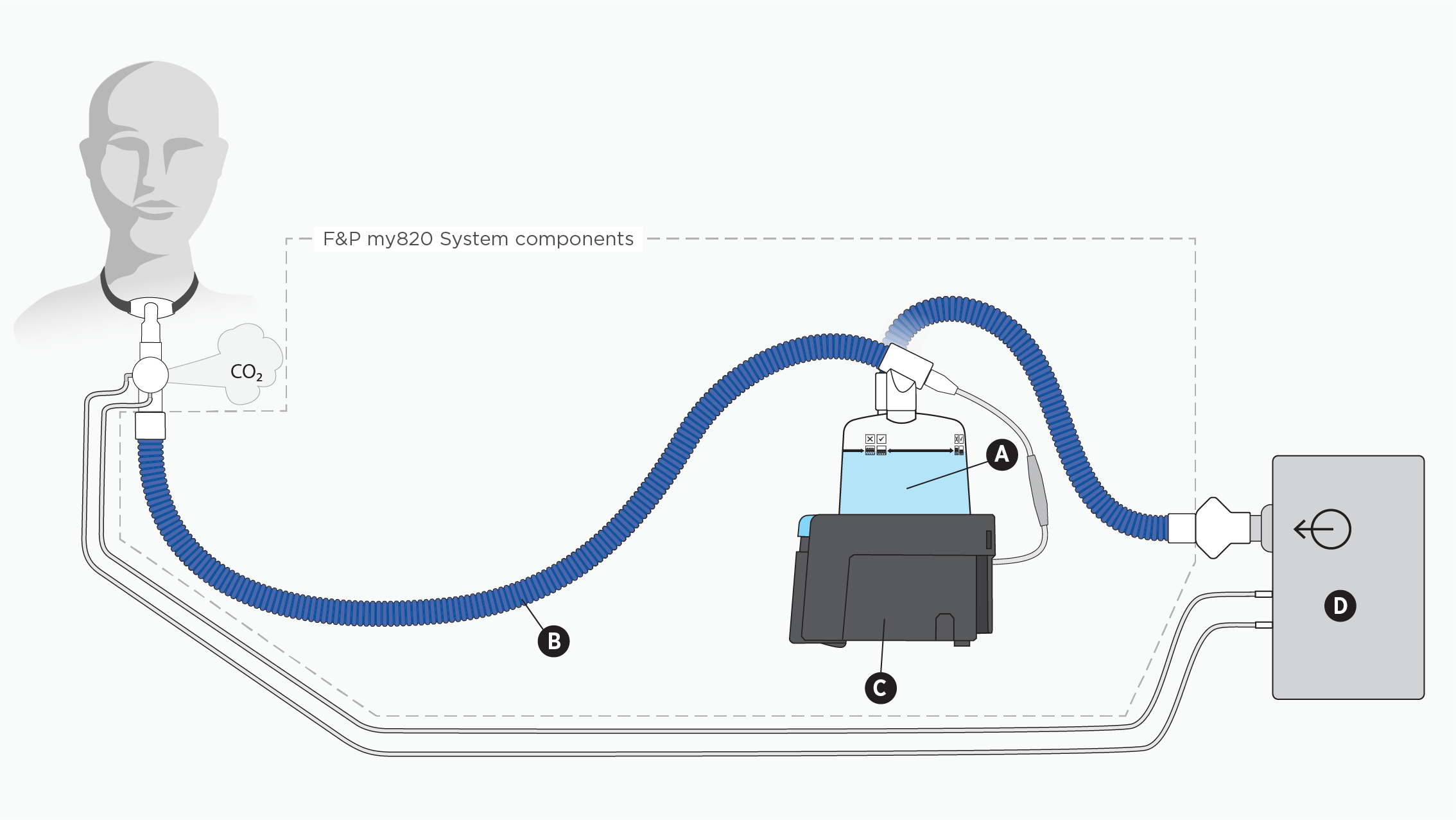
Not all accessories shown are included in F&P my820 System breathing sets. Always follow the directions for use.
F&P my820 System for noninvasive ventilation (NIV)
The gas leak, high flow rates, and unidirectional flow of noninvasive ventilation can dry the mucosa in the nose and mouth. 4-6 This drying can disrupt the mucociliary transport system – a self-clearing defense mechanism in our airways. Upper airway dryness and discomfort are often reported when respiratory gases do not contain adequate levels of heat and humidity during noninvasive respiratory support. Discomfort can impact a patient’s ability to comply with the required therapy, which can affect therapy outcomes. Adding heated humidification provides warmth and moisture to inspired gases, which may make NIV therapy more comfortable, and support patient tolerance.7
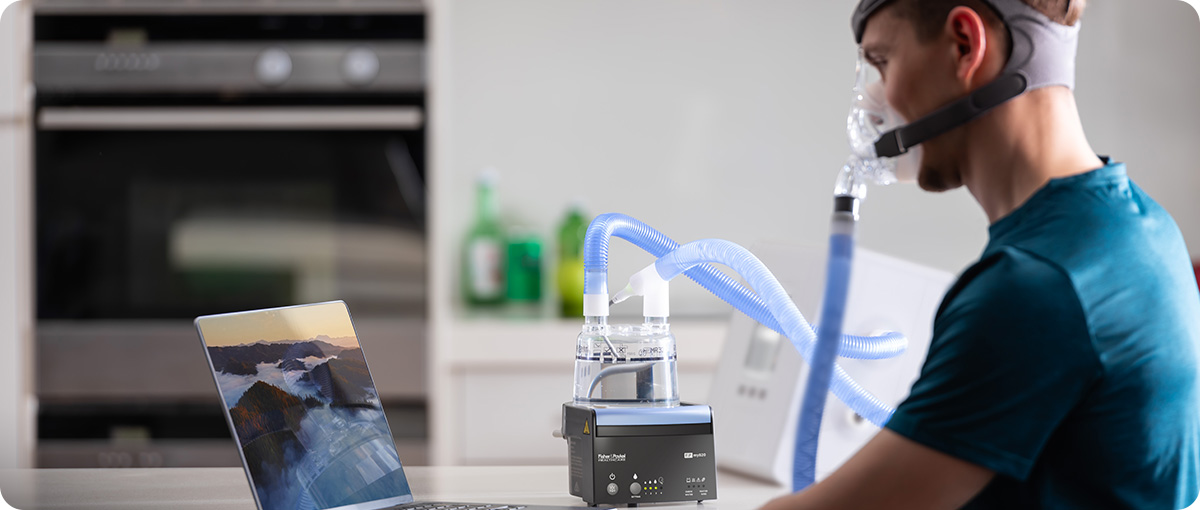
Single-limb, vented mask setup
A. Humidification Chamber B. Breathing Tube C. Humidifier Base D. Ventilator or other flow source

Not all accessories shown are included in F&P my820 System breathing sets. Always follow the directions for use.
F&P my820 System for humidified high flow
Humidified high flow therapy (sometimes called high flow oxygen therapy) involves providing heated and humidified air at high flow rates of up to 60 L/min to patients who are spontaneously breathing. Factors such as airway hydration, dynamic airway pressure, increased patient comfort and the ability to incorporate supplemental oxygen all contribute to a range of benefits for the patient. These can include improved mucociliary clearance and reduced work of breathing1 as a lower respiratory rate,8 and less rebreathing of CO2.9
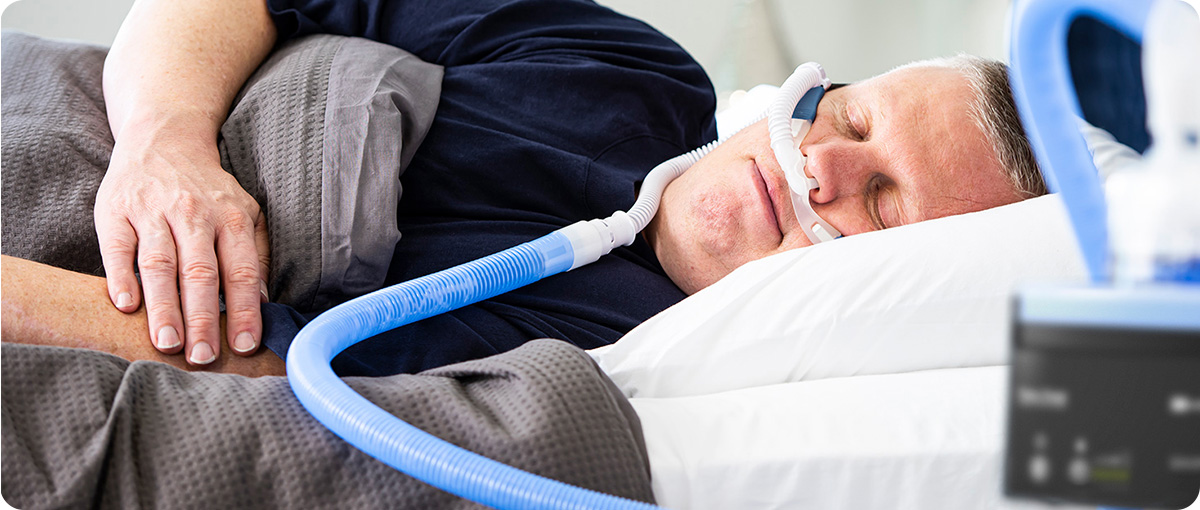
Humidified high flow setup
A. Humidification Chamber B. Breathing Tube C. Humidifier Base D. Ventilator or other flow source
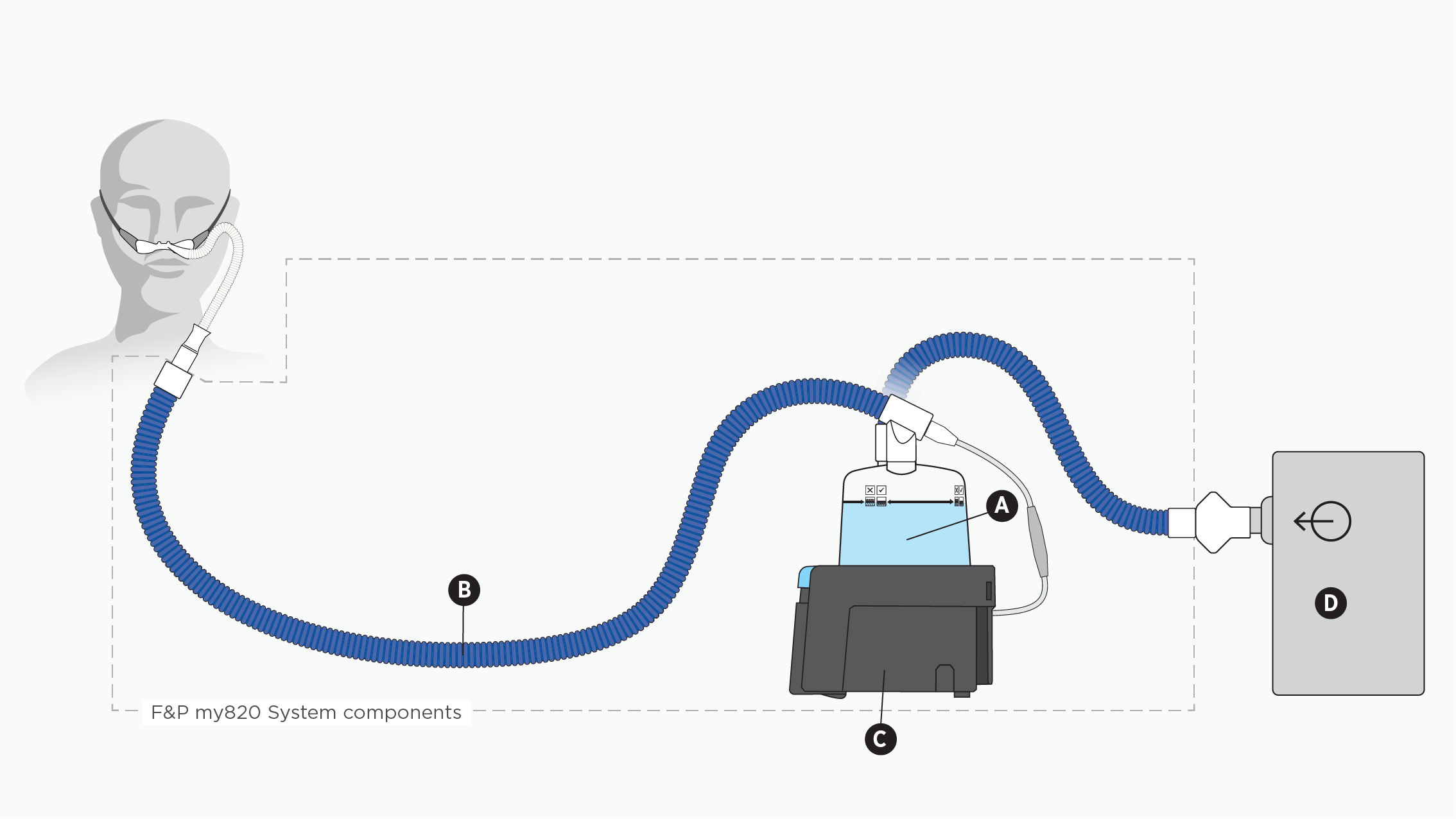
Not all accessories shown are included in F&P my820 System breathing sets. Always follow the directions for use.